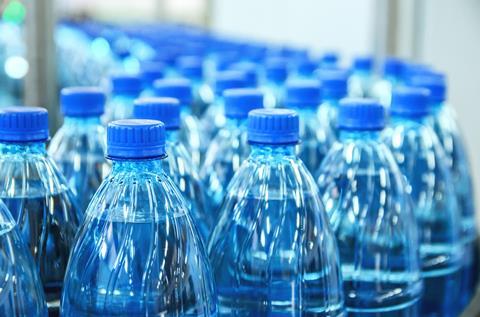Ben Valsler
This week, Brian Clegg brings us a plastic precursor that doubles as a tricky spelling test…
Brian Clegg
Plastics are having a bad press, so much so that it can be easy to forget the benefits they provide in, for example, keeping food hygienic. It’s in this context that we should take a look at terephthalic acid – a relatively simple organic acid with a pair of CO2H additions to a benzene ring. That clumsy-looking name with the ‘phth’ in the middle is a combination of two components. There’s terebic, meaning derived from turpentine, after terebinth, the name of the tree in the cashew family that was one of the first sources of the painter’s solvent. And then there’s ‘phthalic’, a contraction of ‘naphthalic’, from the petroleum-derived hydrocarbon mix.
The substance itself dates back to 1846, when French chemist Amédée Cailliot first produced it from turpentine, a blend of organic compounds derived from distilled tree resin. The acid proved to be one of those interesting but ultimately useless discoveries until the 1950s, when it became an essential precursor to one of the most widely-used thermoplastics, the polyester polyethylene terephthalate, or PET. The range of uses of this material is quite remarkable. It is common in food and drink packaging – in plastic bottles, of which 488 billion were produced in 2016, food containers and more. It was an early entrant in the plastic-based textile industry under the trade name Terylene, it is stretched out into an often-metallised film with the trade name Mylar and has plenty more niche applications, from 3D printing to providing the substrate to support thin-film solar cells.

That takes many millions of tonnes of terephthalic acid, which were never going to be supplied from turpentine. However, a better method was discovered back in 1862. We read in the Proceedings of the Royal Society ‘we noticed, among the products of the action of nitric acid on certain liquid hydrocarbons contained in Rangoon tar, an acid of peculiar properties. […] M. Caillot’s account of his new acid was so brief and incomplete, that, although we recognized many points of resemblance between it and the acid we had obtained from Burmese naphtha, we were compelled to repeat his experiments on oil of turpentine before we could fix with certainty the identity of the two products.’ The acid is now synthesised by an updated process of catalysed oxidation of 1,4-xylene or p-xylene – a benzene ring with a pair of opposing methyl groups attached. This is produced from naphtha, effectively as a by-product of the catalytic process converting naphtha into one of the main components of petrol.
The white crystalline acid has other uses, ending up in paints, polyester resins and as a raw material in pharmaceuticals. Its most bizarre application is in military smoke grenades, used to obscure vision with a thick white smoke. However, no other use can come close to its starring role in the production of plastics. Alongside PET, terephthalic acid is also a precursor for polybutene terephthalate or PBT. This is less versatile, but still turns up in a diverse range of products from electrical insulators to showerheads and swimwear as it has better chlorine resistance than many fibres. PBT also turn up in the bathroom in toothbrush bristles and false eyelashes.

Plastics such as PET will continue to be important in our lives, which means more terephthalic acid being produced – for example, China’s production capacity of the acid has been forecast to rise from around 43 million tonnes per annum in 2017 to 53 million in 2022. But as we move away from fossil fuels, petroleum will be an increasingly undesirable raw material. Unlike the other main input for PET production, monoethylene glycol, terephthalic acid can’t yet be commercially produced from a renewable source. The potential environmental benefits of change are clear. In 2018, Ramani Narayan, professor of chemical engineering and material sciences at Michigan State University commented ‘If just 20 percent of the carbon in the 37.5 million or so metric tons of PET used in making bottles worldwide were to be replaced by bio-based carbon, this would absorb 17.2 million metric tons of CO2 from the environment. That would be equivalent to about 40 million barrels of oil savings.’
Having a greener source for terephthalic acid would require it to be produced from biomass – plant matter – which reduces greenhouse gasses by deriving the carbon for the compound from carbon dioxide in air and reduces emissions during production. Experimental sources currently include corn and sugar beet – in both cases routing via xylene – or orange peel, which is as yet less of an industrial process, but is interesting both in involving a waste product as source and in routing directly to terephthalic acid from a derivate of limonene, an oily component of citrus fruit skins.

It’s good that we are concerned with the environmental impact of the misuse of plastics, but just as we shouldn’t throw away the drink bottle into the ocean, we shouldn’t throw away the hygiene and practicality benefits that a versatile (and recyclable) plastic such as PET has brought us. And all thanks to that seemingly useless discovery in turpentine.
Ben Valsler
Brian Clegg with terephthalic acid. Next week, Mike Freemantle marks the 20th anniversary of a huge environmental disaster.
Mike Freemantle
Hungarian authorities estimated that 1,240 tonnes of dead fish washed up along the river. The poisoning of the Tisza was considered by some observers to be the worst environmental disaster in Europe since the Chernobyl nuclear accident in April 1996.
Ben Valsler
Until then, email chemistryworld@rsc.org or tweet @chemistryworld with any ideas for compounds we should cover, and you can find all of our previous podcasts at chemistryworld.com/podcasts. I’m Ben Valsler, thanks for joining me.
Additional information
Theme: Opifex by Isaac Joel, via Soundstripe
Additional music: Smoke and mirrors by Falls, via Soundstripe














No comments yet